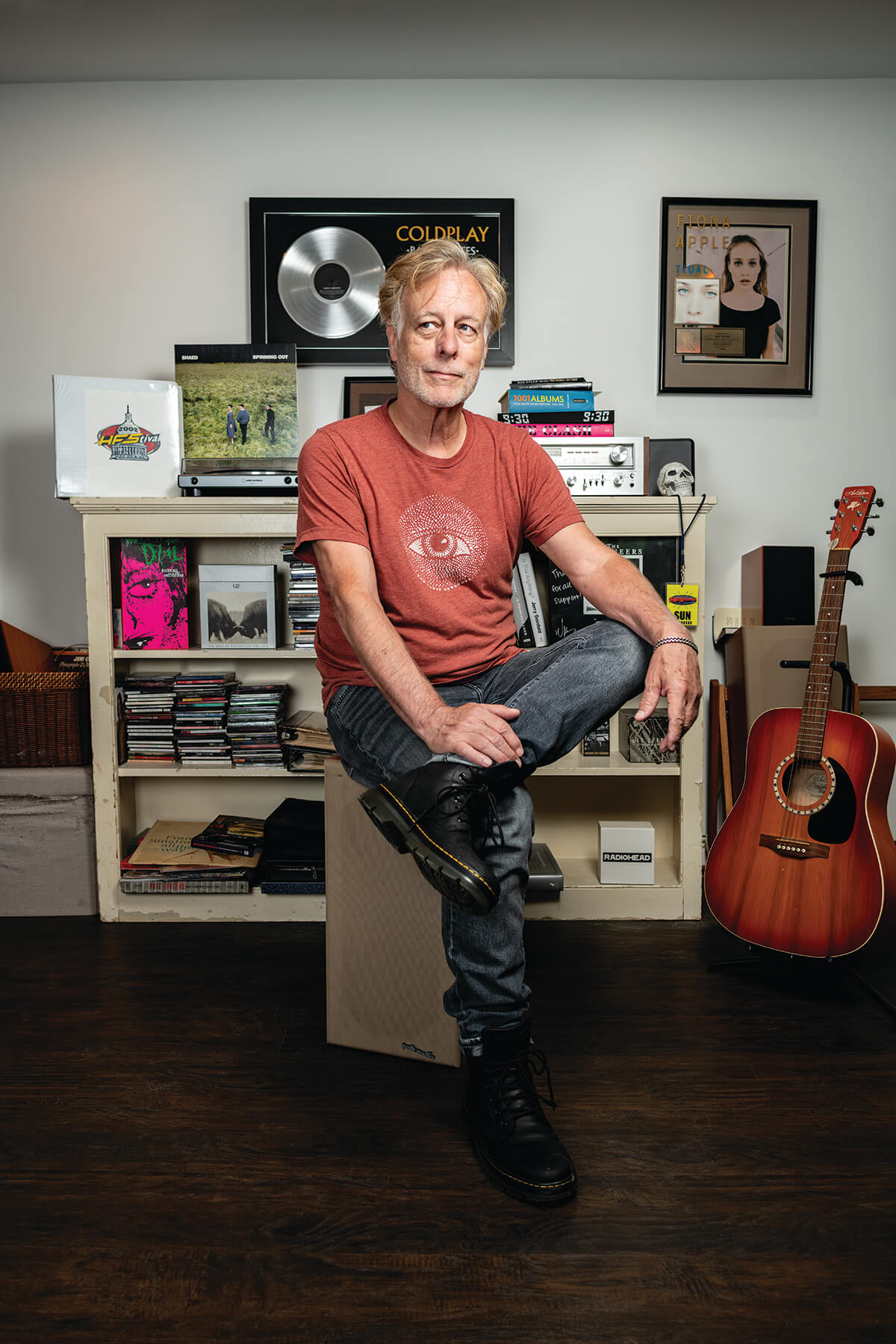Arts & Culture
How HFStival Got Ready to Rock Again
After nearly two decades, the iconic all-day concert will return on September 21 at D.C.’s Nationals Park, featuring bands many of its original festivalgoers grew up on.

When news broke that the region’s most famous music festival would be rising from the dead this month, it was greeted with jubilation by a generation of fans who saw some of the biggest names in alternative rock during its heyday, decades ago. But perhaps no one is looking forward to the return of the HFStival more than Crownsville resident Bob Waugh, pictured above.
After years in commercial radio, Waugh joined 99.1 FM WHFS in 1991, when the beloved station was broadcast to a cult-like following throughout the Mid-Atlantic. It’s been said that “HFS,” as it was colloquially known, was the first to play progressive bands like The Cure and R.E.M. on local airwaves, and at the time of Waugh’s arrival, they’d also launched an all-day concert in Fairfax, Virginia. In 1992, it moved to a racetrack in Upper Marlboro, Maryland, and was rebranded the HFStival. The rest is music history.
In Upper Marlboro, “It was a clusterfuck, because the access roads weren’t adequate and a lot of people couldn’t get in,” recalls Waugh, who eventually became the station’s program director. “After it was over, these guys came to us and they said, ‘You ought to think about moving this to RFK Stadium.’ And we were hesitant about that, because it held 55,000 people.”
The next year, in Washington, D.C., Waugh convinced INXS to headline, and the festival sold out in a matter of days. Over time, a single stage grew into several, with the station promoting “17 bands for 17 bucks.”
Most HFStivals were held at RFK, but other venues like M&T Bank Stadium were used occasionally, always with legendary lineups that included the likes of the Red Hot Chili Peppers, Rage Against the Machine, and Baltimore’s own Lake Trout. Along the way, for many Maryland music fans, these became a rite of passage.
“If you turn to a stranger at a bar who looks to be around 40, ask them about going to an HFStival, and chances are, they’ll have a story about losing a shoe in the mosh pit or seeing Jewel get hit by a frisbee on stage,” says Sam Sessa of Baltimore Public Media, the company that runs WYPR and WTMD. “These festivals are core memories for a whole generation.”
And evidently, they’re not easily forgotten. A casualty of a changing industry, the HFStival ended in 2004, a year before the station as we knew it went off the air, too. But now, after nearly two decades and multiple attempts at revival, it’s ready to rock again.
Earlier this summer, it was announced that the HFStival will return on September 21 at D.C.’s Nationals Park, featuring bands many of its original festivalgoers grew up on: Bush, Garbage, the Violent Femmes, Incubus. Plus Death Cab For Cutie, the Postal Service, and Jimmy Eat World. Tickets now start at $150.
The festival’s savior is I.M.P, the Bethesda-based concert promoter behind venues like the 9:30 Club and Merriweather Post Pavilion. After the Nationals approached them with the idea, I.M.P. was able to secure the rights to use the festival name.
“There’s this opportunity to bring all of these fan bases together for a night of music that people just love,” says Jen Hass, I.M.P.’s co-director of booking, who put together this year’s lineup. “That was really exciting for everybody.”
Which brings us back to Waugh. Now a consultant for radio stations, he is working with I.M.P. on the new HFStival. Among his responsibilities is helping arrange appearances by former HFS deejays, including Gina Crash, Rob Timm, and Pat Ferrise. But moving forward, he doesn’t see the festival as just an exercise in nostalgia.
“My feeling is that really you can’t go home,” he says. “If I was I.M.P., I would want to make HFStival mean to [the Baltimore-D.C. area] what Lollapalooza currently means to Chicago. And just the way Lollapalooza evolves every single year, so too should the HFStival.”